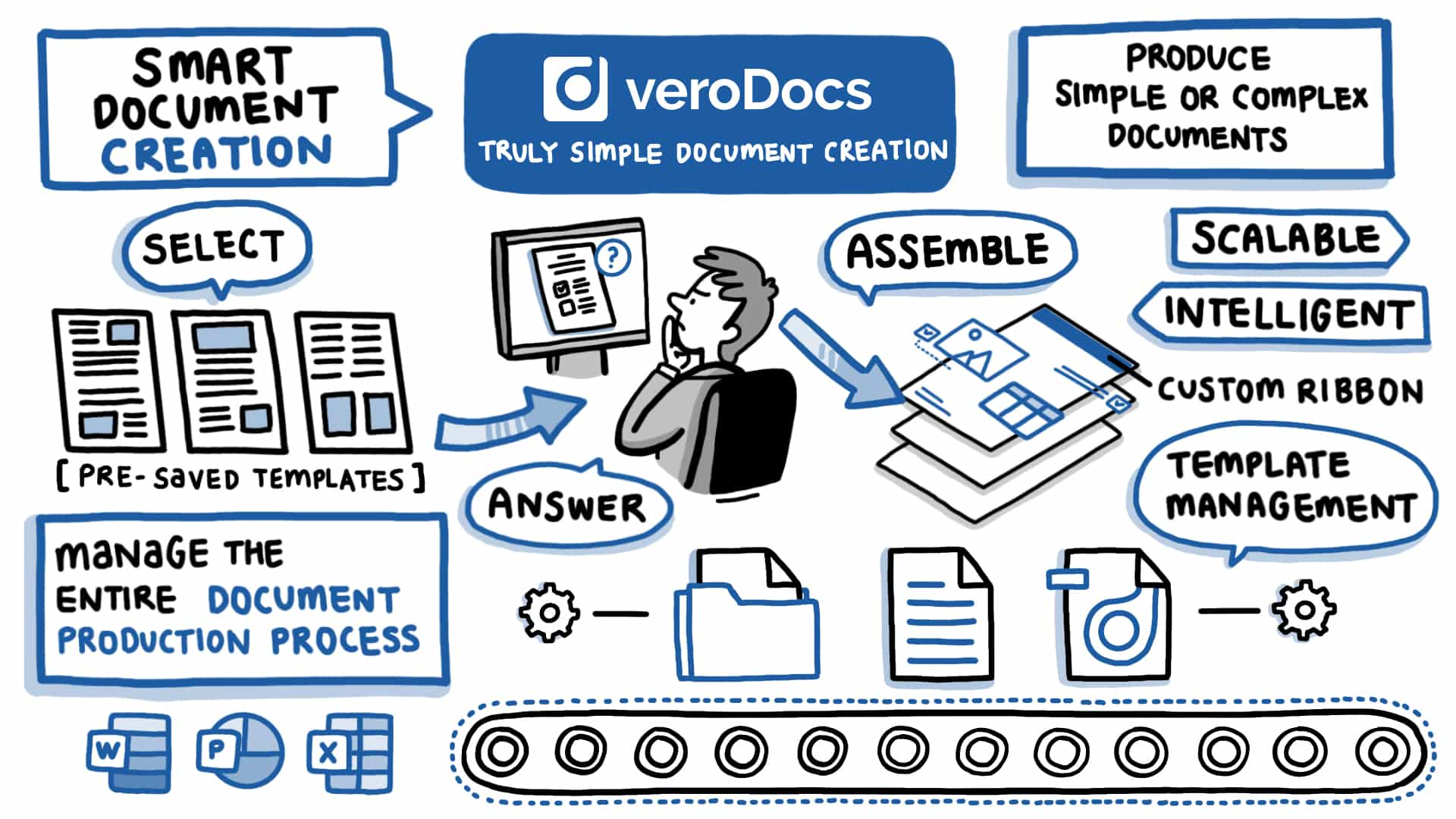 By Caitlin Burns, DocsCorp Content Manager.
By Caitlin Burns, DocsCorp Content Manager.
For law firms and other organizations that create an enormous number of documents, opening a blank Word file and typing is very inefficient. Staff would lose hours every day searching for details like a clients’ address or the latest version of a set of terms and conditions.
Many firms have realized inefficient document creation was eating up precious time, so they adopted document templates. Staff would create their document using a template that automatically pulls a lot of information from other systems, helping them to be more accurate and productive.
But document templates come with their own set of challenges. If an organization creates many different types of documents, it is likely to manage many templates. Changing these templates manually is a time-consuming process. And, without centralized deployment, it is easy for staff to end up with different versions, leading to inconsistency across the business.
The most common document problems can be broken down to those encountered by a) end-users, and b) template management system administrators. They are:
For end-users:
- Inconsistency in document content and styles
- Inefficient manual typing and/or copy-pasting
- Human error
For system admins:
- Having to manage dozens of different templates manually
- Needing to create multiple versions of each template for different offices
Template management software helps resolve each of these issues.
Inconsistency in document styles and content
Without centralized templates, it’s easy to make a mistake or miss something. Working from templates helps users produce professional documents that are consistent across different departments and even other offices.
Adding content to templates is straightforward for users of template management software. Insert it by answering a series of questions related to your document, or by dragging content blocks from your organization’s content library onto the page.
Our template management software, veroDocs, offers a custom-built ribbon in Microsoft Office that has all your essential document production tools in one place. It is easy to make changes to your document while you work and finalize the look and feel using the tools in this ribbon.
Complicated template management
Manually updating dozens of document templates is no small task. With template management software, administrators can create, change, and manage document templates without the need for coding, macros, or software engineers.
Templates can be quickly and easily deployed via Active Directory, ensuring everyone works from the most up-to-date version.
Administrators can create templates for each individual office, complete with their own logo, theme, and proofing language. The user’s location will be determined automatically, based on their Active Directory settings. Otherwise, when a user changes the office location from London to Milan, the template will change automatically.
For organizations not yet using template management software, there are many efficiencies to be gained when it comes to document creation. Working from templates helps users produce professional, consistent, and accurate documents quickly. And template management software saves administrators time and helps them to ensure staff always have access to the latest authorized corporate templates.
Related

